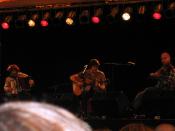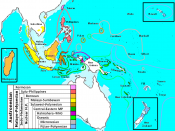Mini-Ethnography on the People of Lau Lau consists of 100 small islands and reefs spread over 1400 square kilometers in the South Pacific. There are three main divisions: the islands of southern and central Lau including Lakemba, Oneata, Mothe, the Kambara group, the Fulanga group, and the Ono group; the Exploring Islands; and the Moala group. Volcano's are located in the high islands which are well watered with rich soil and support intensive horticulture (cultivation). Limestone islands are located in southern Lau and have little wate and poor soil, but they do have forested basins and lagoons rich in fish and shelfish.
Population figures from early contact times are not available at this time. In 1920 estimated reports had figures of 7402 and in 1981 16,000. The Lauan language is a member of the Eastern Fijian Subgroup of Central Pacific Austronesian languages. The modern dialect is a mixture of the present traditional dialect, the dialect of Bau Fiji, and the Tongan language.
The Lauan culture reflects the influence of the Western Fiji Islands, Tonga, and British colonialism. 30 of the 100 islands are inhabited. Villages are located along the coast and are often surrounded by coconut palm and breadfruit tree grooves. Village land is owned by clans, each clan controls a strip of land that runs from the shore inland to the mountain slopes. Villages contain dwellings of various sizes, men's houses for each clan, kitchen huts, oven shelters, a garden shed, canoe shelters, ceremonial grounds, and burial grounds. Some villages have a store, reservoir, a mission church, and a temple.
At the highest level of kinship organization are five ranked phratries: 1,2 and 3 are the chief's phratries, which consists of 20% of the population. Carpenter phratries are included here and they also make up a portion of...


